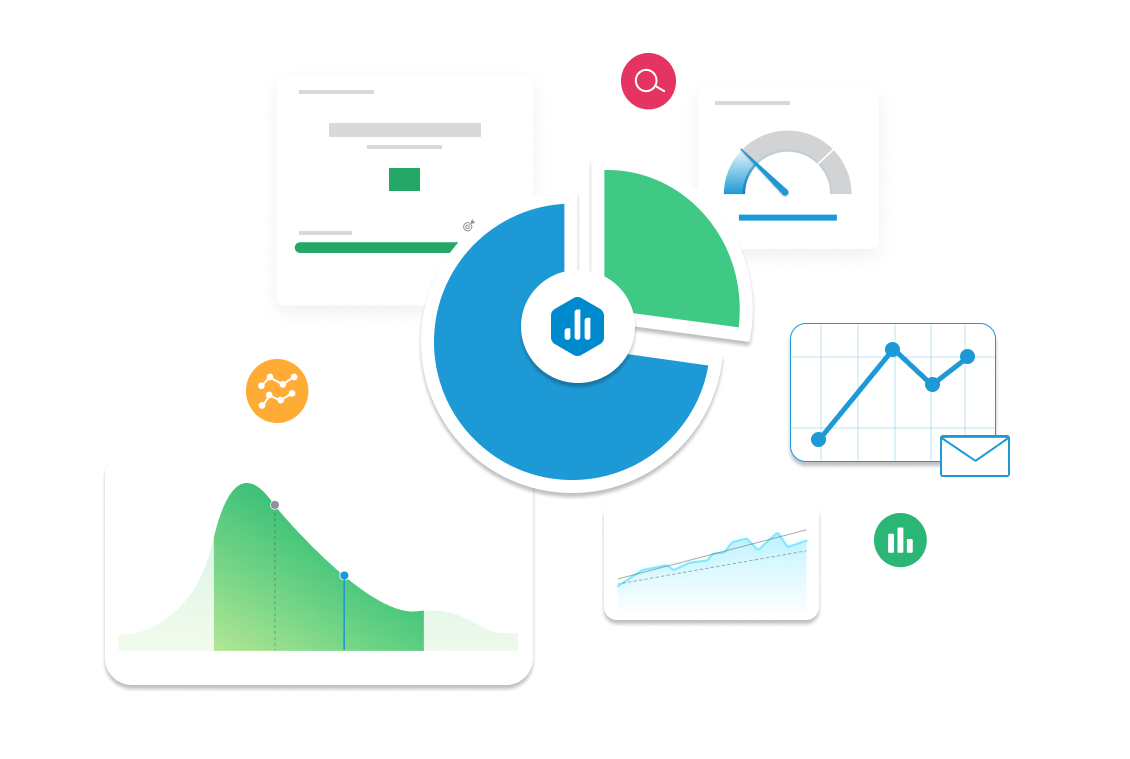Net Promoter Score (NPS)
Discover how Net Promoter Score (NPS) helps businesses measure customer loyalty and satisfaction. Learn how to track, analyze, and optimize NPS to improve retention and brand advocacy.

| Category |
Marketing |
|---|---|
| Type |
Lagging Indicator |
| Calculation |
NPS = %Promoters − %Detractors |
| Measure |
Tracks customer sentiment based on a simple survey question: |
| Data Sources: |
SurveyMonkey, Typeform, HubSpot, Zendesk, Qualtrics, Google Forms. |
| Frequency |
Tracked monthly or quarterly to monitor customer satisfaction trends and retention strategies. |
Example target
Increase NPS to 70+ in Q3 by enhancing customer support, refining product features, and personalizing customer interactions.
Example Reports Use Case
A Customer Success Manager tracks NPS to assess overall customer sentiment. If NPS drops, they may implement loyalty programs, improve response times, or address pain points in the customer journey.
What is Net Promoter Score (NPS)
Net Promoter Score (NPS) is a widely used metric that measures how likely your customers are to recommend your business to others. It’s a simple yet powerful way to understand overall customer loyalty and satisfaction. Businesses typically ask one key question: “On a scale from 0 to 10, how likely are you to recommend us to a friend or colleague?”
Based on responses, customers are grouped into three types:
-
Promoters (9–10): Loyal fans who will likely recommend you.
-
Passives (7–8): Satisfied but not enthusiastic.
-
Detractors (0–6): Unhappy customers who may speak negatively.
To calculate NPS, use this formula:
NPS = % of Promoters – % of Detractors
For example, if 70% are Promoters and 10% are Detractors, your NPS is 60. This metric helps marketers, product teams, and leaders track brand health, improve customer experience, and drive growth over time.
How to Calculate Net Promoter Score (NPS)
The basic NPS formula is:
NPS = % of Promoters – % of Detractors
To calculate it, first ask customers to rate their likelihood of recommending your brand on a scale of 0–10:
-
Promoters (9–10) love your brand.
-
Passives (7–8) are satisfied but not enthusiastic.
-
Detractors (0–6) are unhappy or unlikely to recommend.
Let’s say you survey 100 customers: 60 are Promoters, 20 are Detractors, and 20 are Passives.
NPS = 60% – 20% = 40
Monthly or Yearly NPS
You can calculate NPS over any time period. Monthly NPS helps you track short-term changes; yearly NPS shows long-term trends.
NPS by Channel or Product
Segmenting by channel (e.g., email, support, product) or product line helps spot where customer experiences differ.
Example: Your app users might give you a 70 NPS, while website users rate 40—useful insight for product and marketing teams.
Why Net Promoter Score (NPS) Matters
Net Promoter Score (NPS) is a critical KPI because it reveals how customers truly feel about your brand. It’s a direct measure of customer loyalty—something that drives long-term growth, repeat business, and referrals. A high NPS often means customers are happy, engaged, and likely to promote your product. A low score can warn of hidden issues like poor service or unmet expectations.
NPS is valuable for many teams:
-
Marketers use it to understand brand perception.
-
Sales teams use it to gauge customer trust.
-
Executives rely on it to track overall customer health and identify risk areas.
For example, if your NPS drops after a product launch, it could signal quality or usability problems. Monitoring NPS regularly helps you catch and fix issues early, improve customer experience, and increase profitability. It’s a fast, reliable way to keep your finger on the pulse of customer satisfaction.
Related KPIs to Net Promoter Score (NPS)
Net Promoter Score (NPS) works best when viewed alongside other KPIs that reflect customer experience, loyalty, and business growth. Here are a few key connections:
NPS vs. Customer Satisfaction Score (CSAT)
CSAT measures how happy customers are with a specific interaction, while NPS reflects overall brand loyalty. A high CSAT but low NPS might mean customers like the service but aren’t loyal long-term. Tracking both gives you a clearer picture of satisfaction vs. advocacy.
NPS vs. Customer Retention Rate
Happy, loyal customers tend to stick around. If your NPS is high, your retention rate often improves. A drop in NPS may signal future churn, making this pair useful for predicting loyalty trends.
NPS vs. Churn Rate
Low NPS often leads to higher churn. If customers are unhappy or unlikely to recommend you, they’re more likely to leave. Watching these together helps identify and fix problems early.
These KPIs together guide better customer-focused decisions.



